two coloured sculptures
A Sensual/Virtual exhibition
at The Fitzwilliam Museum
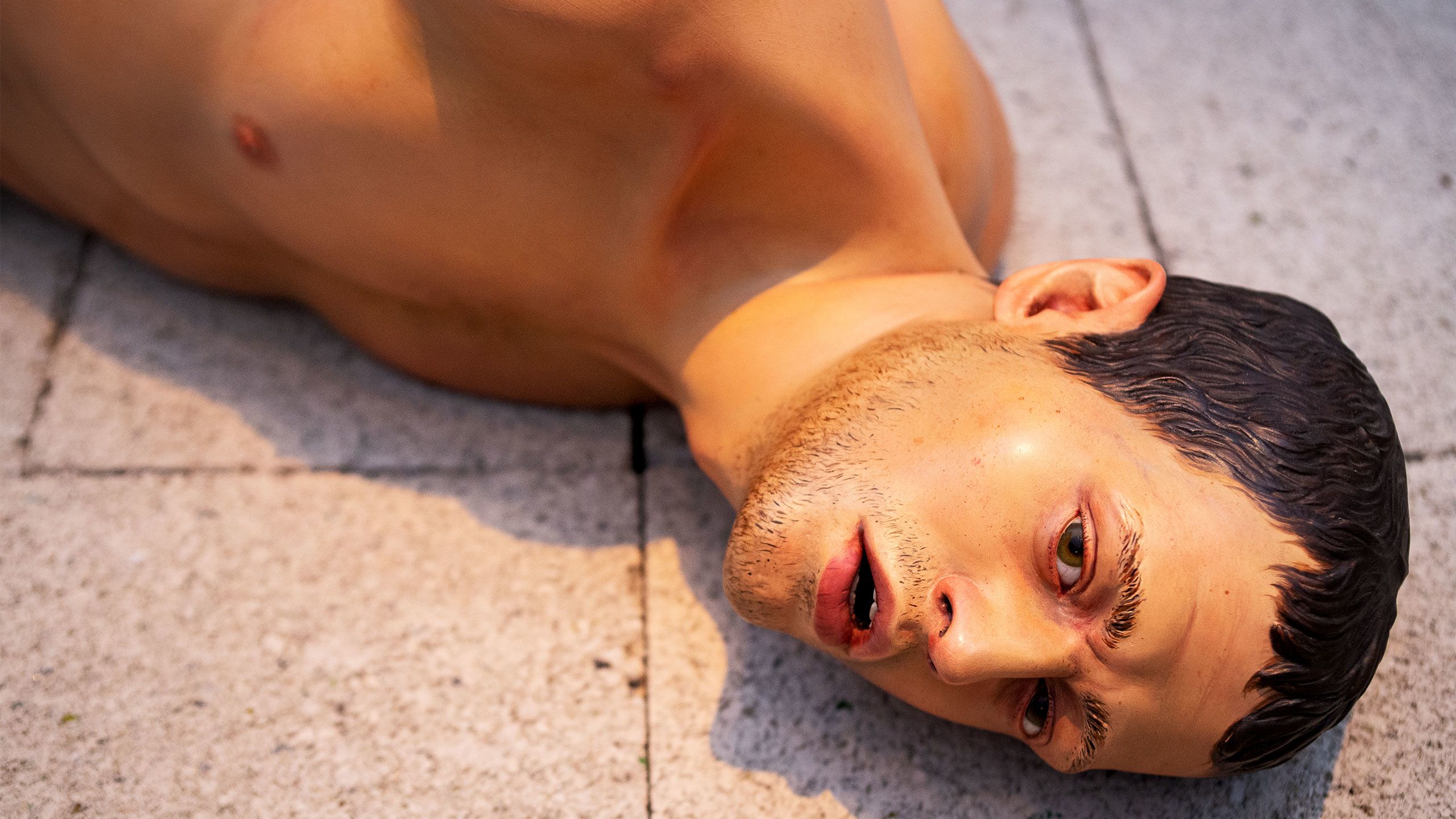
This display, shown in the Fitzwilliam Museum's Octagon Gallery, September - October 2020, considers our complex and contradictory reactions to two juxtaposed life-like male figures: St Sebastian, made by Spanish Renaissance artist Alonso Berruguete in the 1530s, and Action 125, made by Iranian-born, London-based artist Reza Aramesh in 2011.
Although sculpted nearly 500 years apart, the materials, techniques, scale (under life-size), and the idealisation of the male body are similar.
Both sculptors have focused on pain and suffering, fear and submission. On defiance and martyrdom. And these lone, semi-naked, bound and exposed male bodies also speak of beauty, and even erotic desire. Their uncanny naturalism humanises their suffering – encouraging empathy – but also makes them, as a saint for example should be, more than human.
Alonso Berruguete’s St Sebastian
According to what was a well-known story, St Sebastian was a Roman army general who was martyred for his Christian faith by the anti-Christian Emperor Diocletian in 283 AD.
Shot through with arrows, he was miraculously nursed back to health, only to be martyred by being stoned to death.
The cult of St Sebastian became widespread in Catholic Europe from the 1400s, since it was believed that he could protect believers from attacks of the plague. The Martyrdom of St Sebastian was also a subject favoured by Renaissance artists as it gave them a legitimate excuse to portray an almost nude, idealised male body.
Berruguete’s statue may have been made as part of a large multi-figure altarpiece or, more likely, as a stand-alone sculpture that could be carried through the streets in holy processions.
Berruguete had been to Italy and Sebastian’s pose is based on a work by Michelangelo. But this was not intended as an elevated work of art. Instead this was a piece made to inspire popular religious devotion, to make a community feel protected.
Church commentators at the time worried however that the realistic nudity of such images would cause inappropriate desire. It would be interesting to discover whether St Sebastian, beautiful and suffering, was always associated with gay identity, as he is now.
Alonso Berruguete (c.1488 – 1561)
St Sebastian
Spain, probably Valladolid, unknown date, probably 1530s Pinewood, canvas, and rope, painted and with partial gilding
On loan from Colnaghi Ltd.
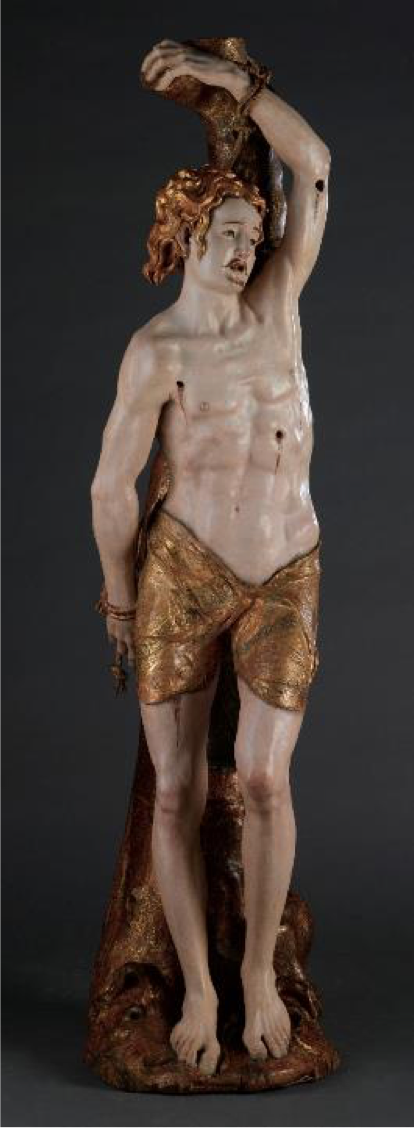
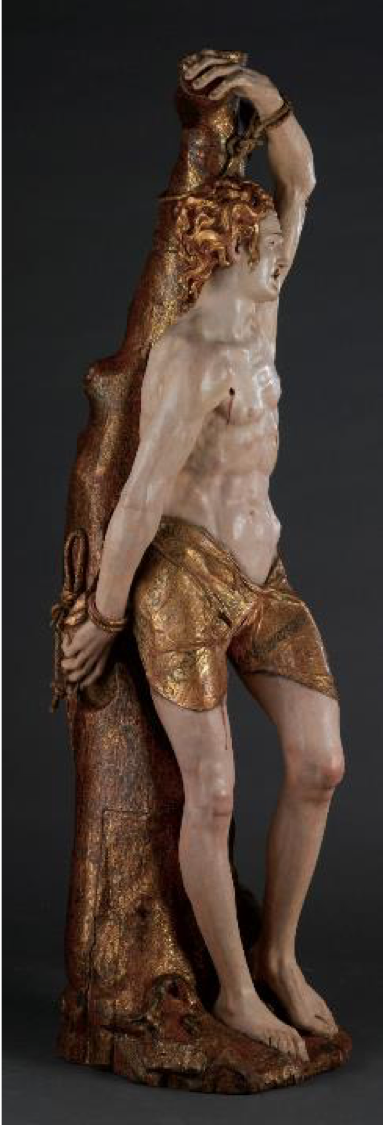
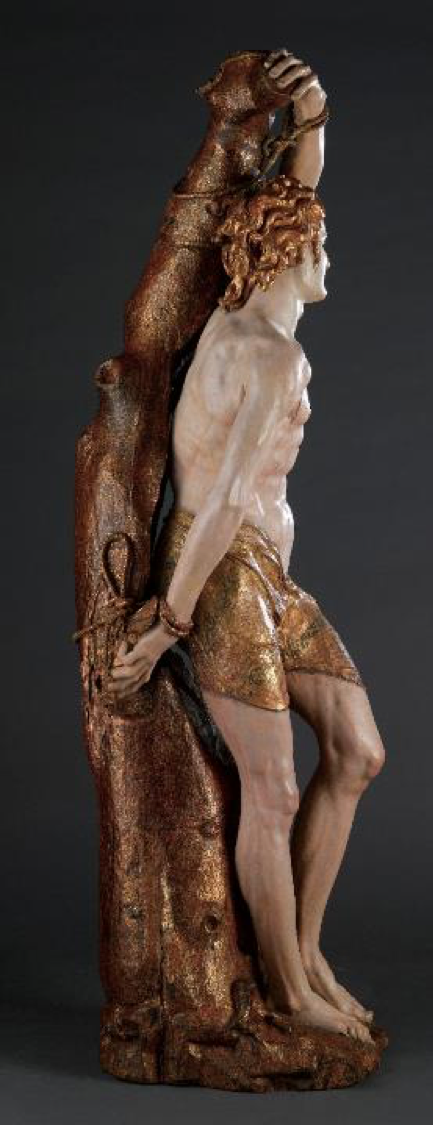
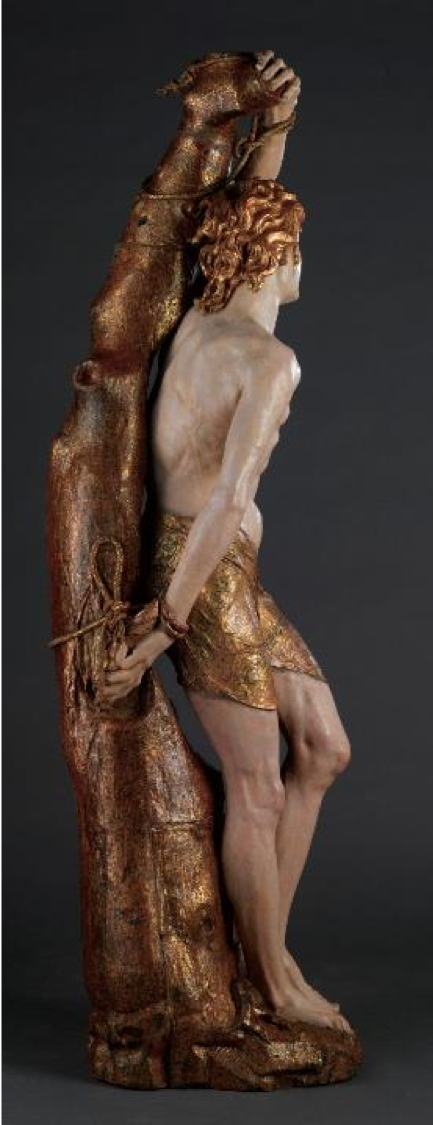
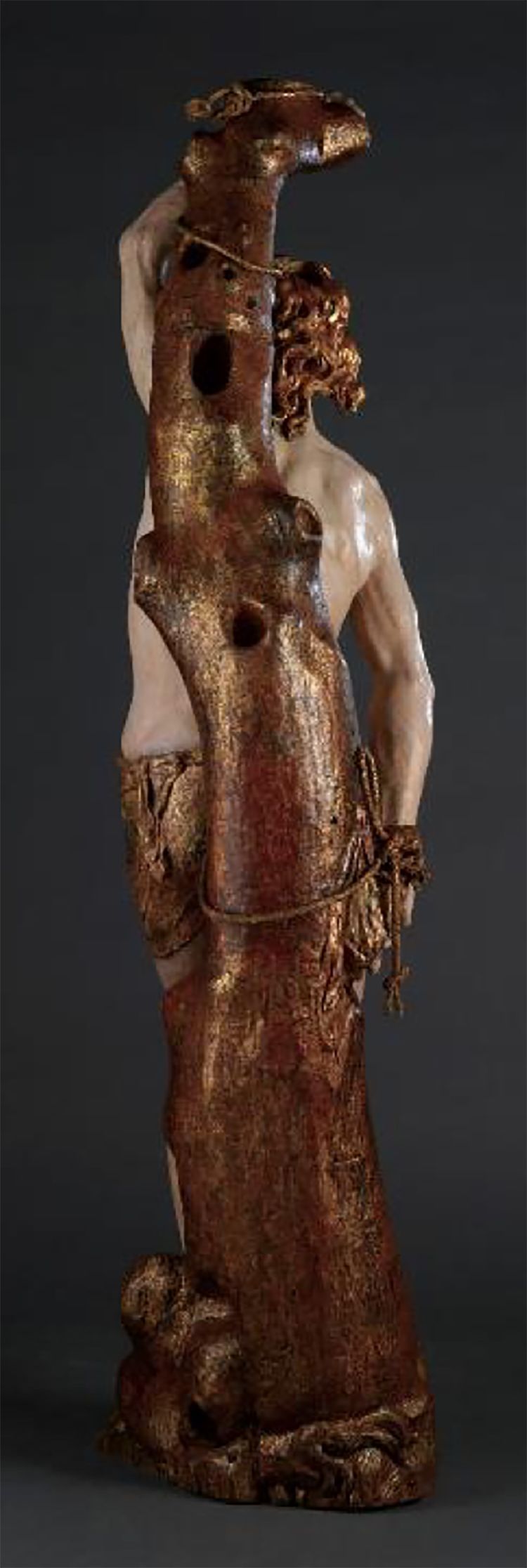
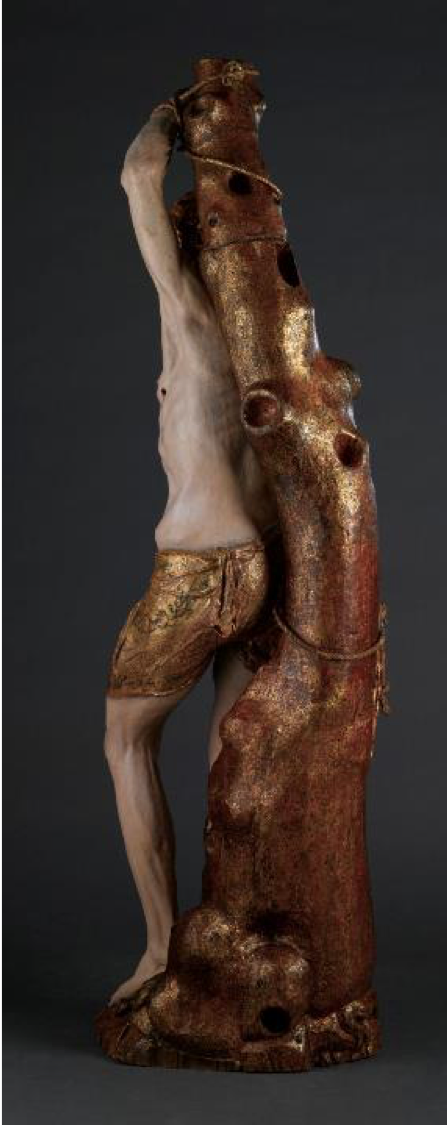
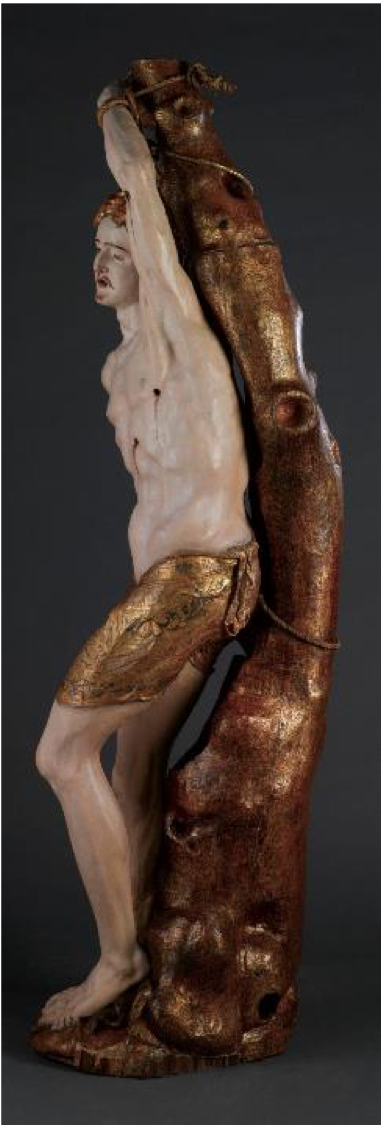
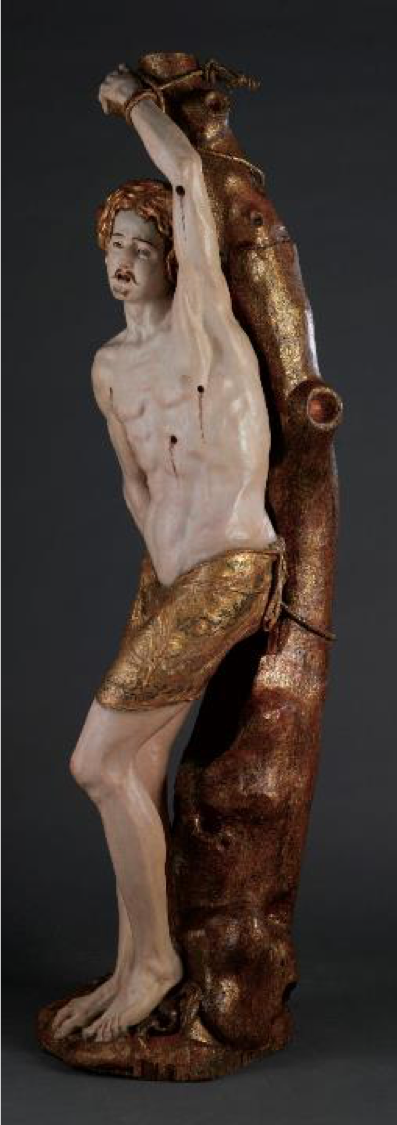
Reza Aramesh’s Action 125
Action 125 is a contemporary secular subject. Its subtitle reveals it to be a Muslim Iraqi prisoner of war captured by invading American forces in Tikrit, Northern Iraq, on 14 April 2003, at the start of the Iraq War (2003 – 2011).
Seen here as a stand-alone piece, it was made in 2010 – 11 as part of a larger series of nine sculptures, each representing an act of subjugation. The sculptures show a lone male victim – exposed, humiliated, forced to strip down and so rendered horribly, temptingly vulnerable.
Aramesh’s haunting and unnerving ‘icons of beauty and terror’ derive from a number of visual sources. These range from beautiful, highly-finished Renaissance and Baroque sculptures and paintings of ecstatic saints – like Berruguete’s St Sebastian – to shocking, hastily-snapped reportage photographs of victims of war, conflict, and displacement from Algeria and Korea in the 1950s to present-day Iraq and Palestine. Aramesh’s aim is to ‘create a dialogue between icons of European art history and images of contemporary political conflicts’.
Reza Aramesh (1970 –)
Action 125: Tikrit city, Iraq, Prisoner of war. Monday, April 14, 2003
England, London, and North Italy, 2011
Limewood, painted, with glass eyes; and concrete breeze blocks (plinth)
On loan from a private collection
© Reza Aramesh, reproduced courtesy of the artist
Reza Aramesh’s reflections
“The sculptures in the Action series carry layers of historical and contemporary reflections on race, class, and sexuality. They are in conversation with, and refer to, the Western understanding of anguish and survival as represented in traditional Renaissance iconography, especially the figure of St Sebastian. My objective in this series is to challenge the idealised notion of the European Renaissance and its presumed superiority with regard to beauty, religious ecstasy and torment.
The Action figures aim to critique the still-prevalent idea that the Renaissance is the highest point of artistic reference for a superior European civilisation. Unlike Renaissance statues which usually portray noble men, holy personages or mythological figures, my sculptures depict working class, vulnerable men of colour from the Middle East, Asia and Africa. They are hand-carved in limewood, painted and varnished, using the same techniques and visual language of traditional Spanish polychrome sculptures but they are meant to glorify the everyday, ordinary man. They aim to represent symbols of strength, resilience and power.
I think it is great how belief – whether political, cultural or religious – and sexuality come together in this pairing. Berruguete’s St Sebastian (made within the context of a Catholic Christian iconography) with Action 125 (a symbolic depiction of a prisoner of war in Iraq and a representation of the violated body of a Muslim) are both very active subjects, who have been subjugated because of their strong beliefs. In some ways, they are both rebellion subjects. Their juxtaposition should raise many questions including the subjectivity of the idea of martyrdom, and how our belief systems are mere constructs and loaded with historical fictions.”
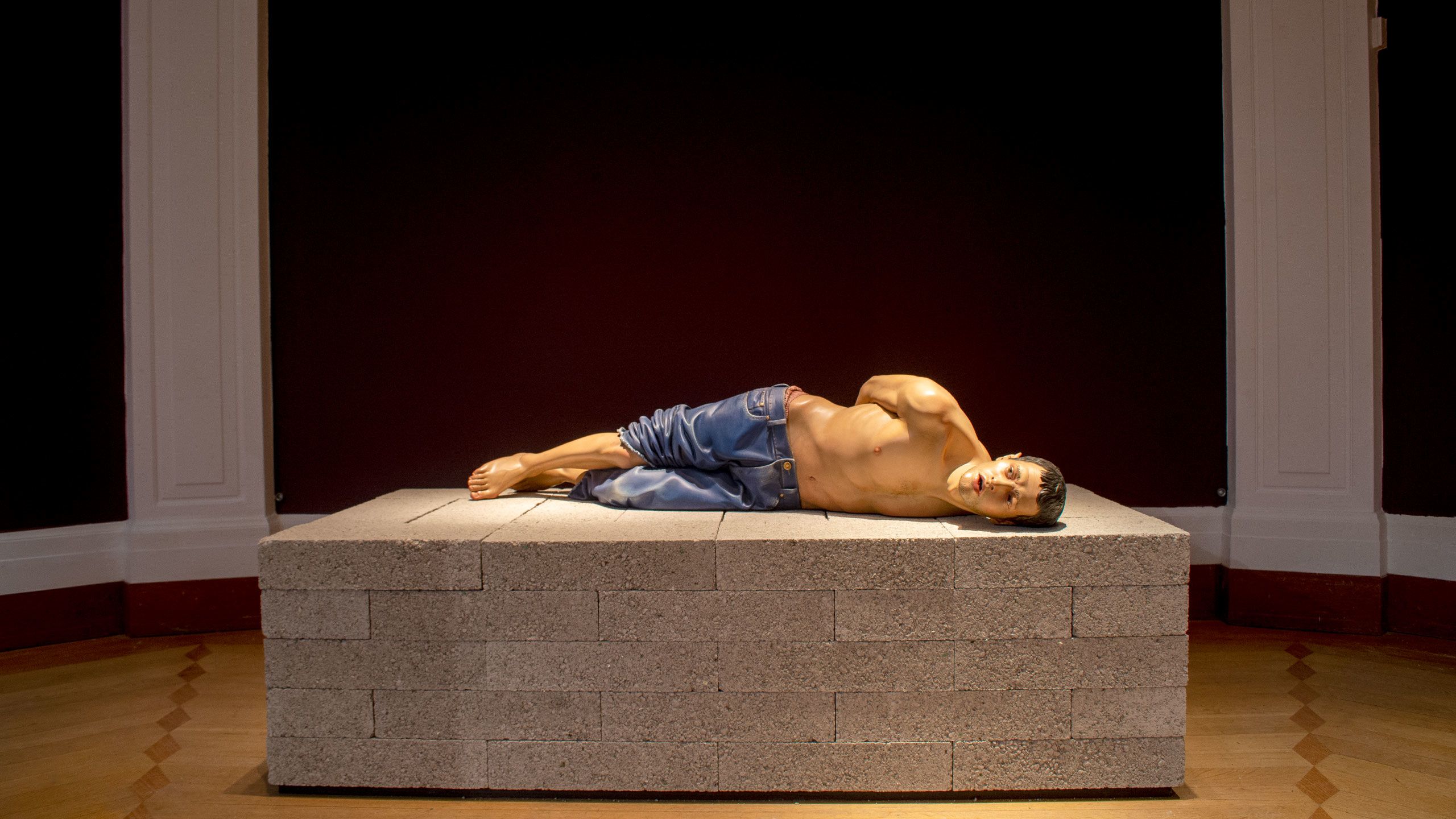
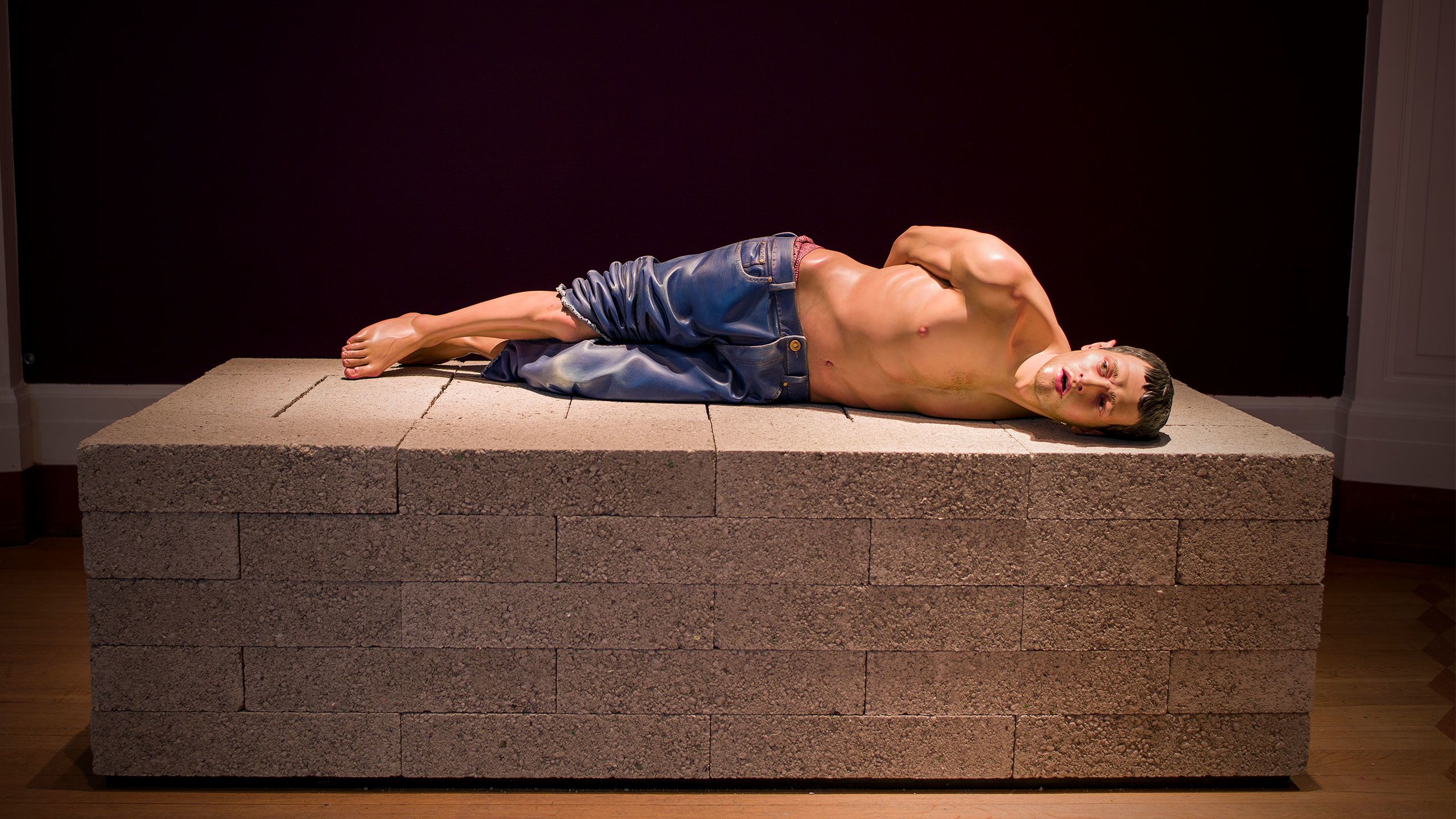
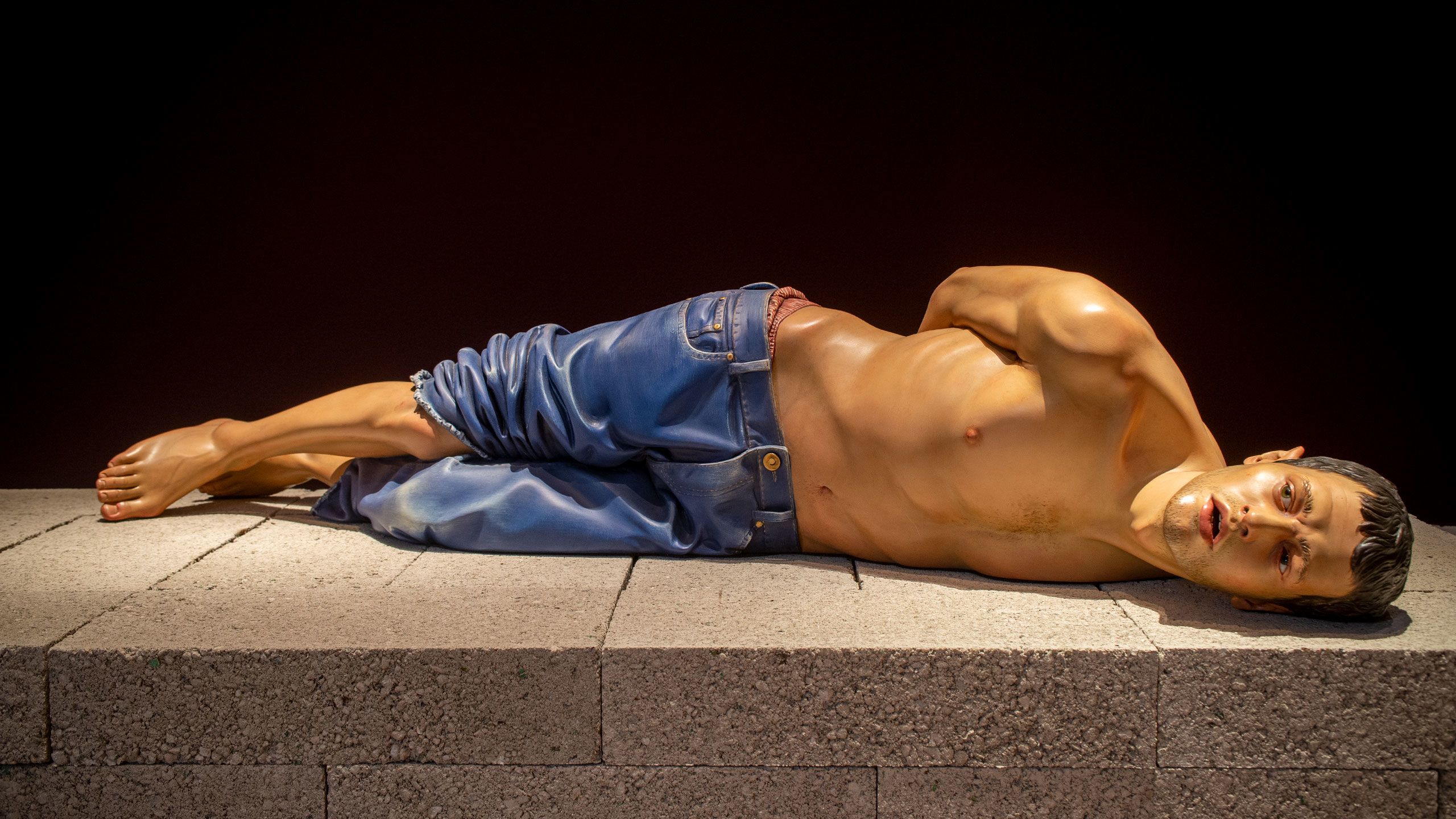
What is your reaction?
You are confronted here with two images of youthful victims in extreme physical and psychological anguish, one standing upright bound to a tree, the other lying on his side on the ground. They are specific individuals but, stripped of personal identifying attributes, they also become ‘everyman’ sculptures, timeless images of the tortured, disempowered and emasculated male body, suffering at the hands of violent, invisible aggressors. We should remember, too, that St Sebastian survived his ordeal. So these might also be images of victory over the odds.
What is your reaction to these works? Are you horrified? Angry? Pitying? Inspired? All of those things together? Their realism might cause the viewer discomfort. But do you want to turn away? Or do you feel their fascination? Despite, or even because, of their subject matter, have these become images of erotic desire?
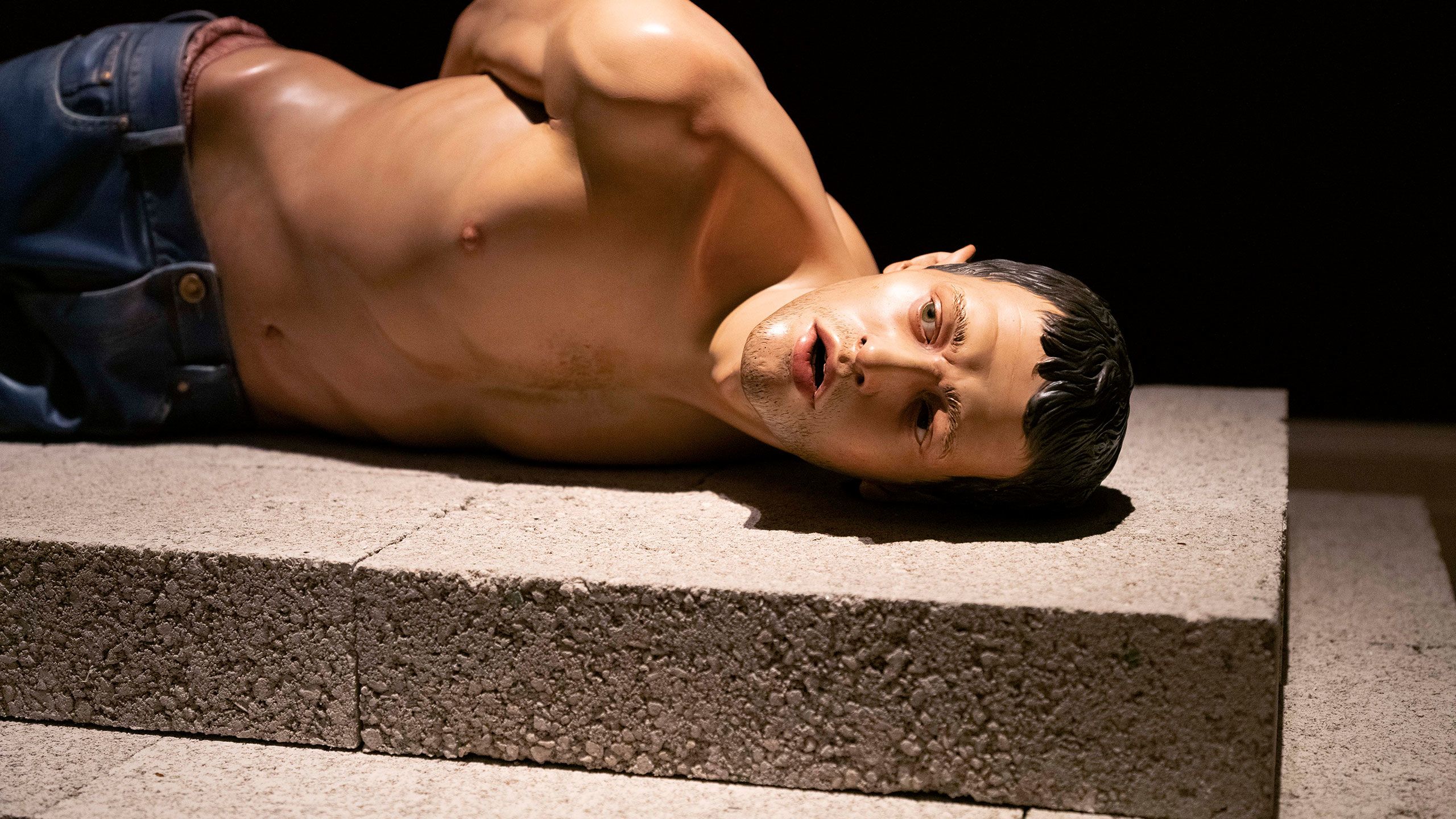

© Fitzwilliam Museum, Cambridge
St Sebastian images © Colnaghi Ltd

